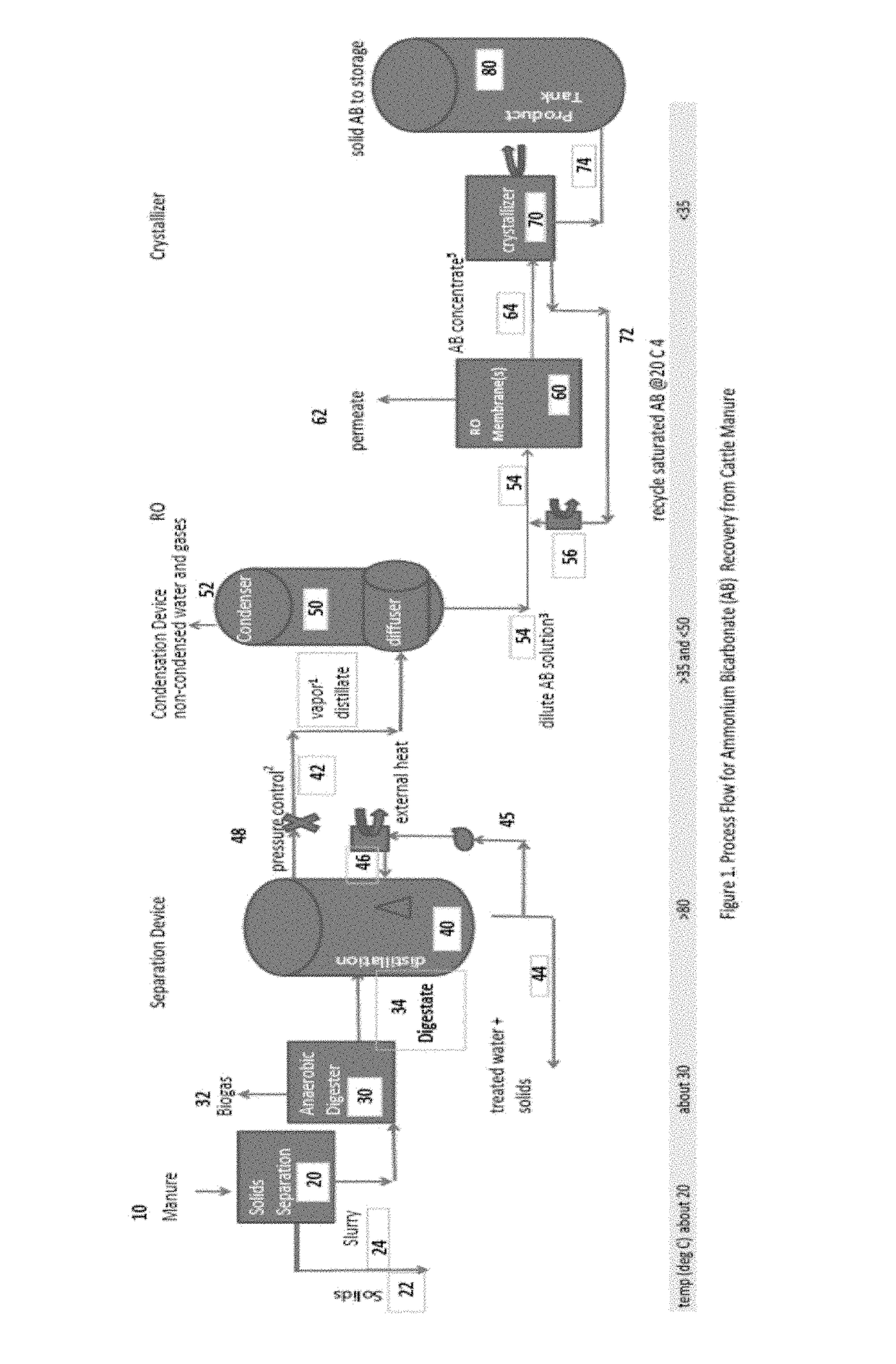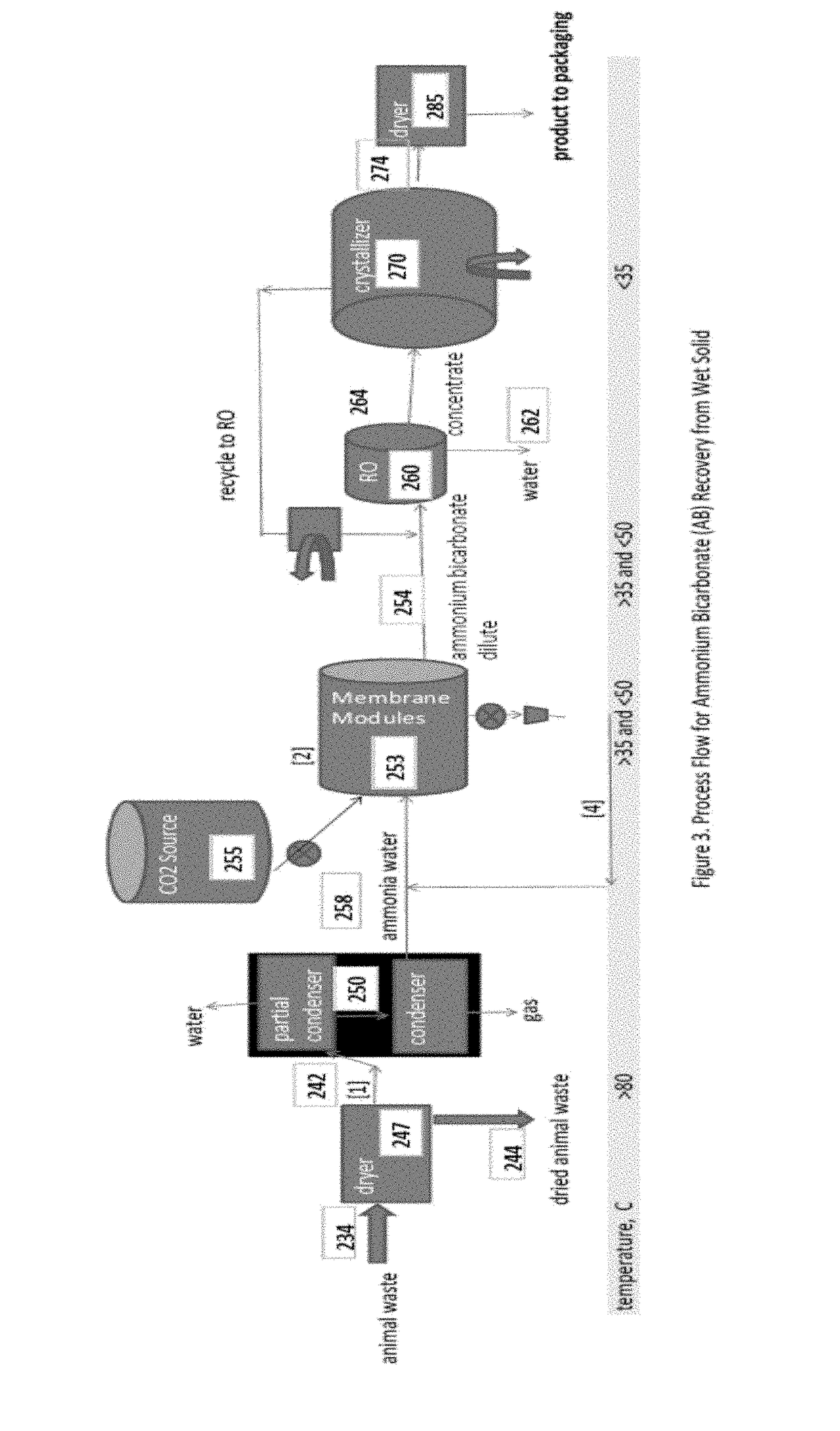Process to recover ammonium bicarbonate from wastewater
a technology of ammonium bicarbonate and wastewater, which is applied in the direction of water/sewage multi-stage treatment, water/sewage treatment by degassing, separation process, etc., can solve the problem of potential source of air and water pollution of ammonia (nh3) that is not captured in a stable chemical form, and achieve the effect of reducing the need, cost and maintenance costs, and significant financial advantages
- Summary
- Abstract
- Description
- Claims
- Application Information
AI Technical Summary
Benefits of technology
Problems solved by technology
Method used
Image
Examples
Embodiment Construction
[0034]The accompanying drawings, which are incorporated in and constitute a part of this specification, illustrate embodiments of the invention and, together with the general description of the invention given above and the detailed description of an embodiment given below, serve to explain the principles of the present invention. Similar components of the devices are similarly numbered for simplicity.
[0035]FIG. 1 is a process flow schematic drawing of one embodiment of the invention for the treatment of cattle manure (e.g., from a CAFO) comprising solids separation, anaerobic digestion, stripping, condensation, concentration, and crystallization. In the process according to FIG. 1, there is no chemical addition to adjust pH prior to, or in, the stripping process. The present invention excludes the use of pH adjustment chemicals. In the process according to FIG. 1, there is also no external supply of carbon dioxide. The carbon dioxide dissolved in solution within the anaerobic diges...
PUM
| Property | Measurement | Unit |
|---|---|---|
| temperature | aaaaa | aaaaa |
| temperature | aaaaa | aaaaa |
| temperature | aaaaa | aaaaa |
Abstract
Description
Claims
Application Information
 Login to View More
Login to View More - R&D
- Intellectual Property
- Life Sciences
- Materials
- Tech Scout
- Unparalleled Data Quality
- Higher Quality Content
- 60% Fewer Hallucinations
Browse by: Latest US Patents, China's latest patents, Technical Efficacy Thesaurus, Application Domain, Technology Topic, Popular Technical Reports.
© 2025 PatSnap. All rights reserved.Legal|Privacy policy|Modern Slavery Act Transparency Statement|Sitemap|About US| Contact US: help@patsnap.com



